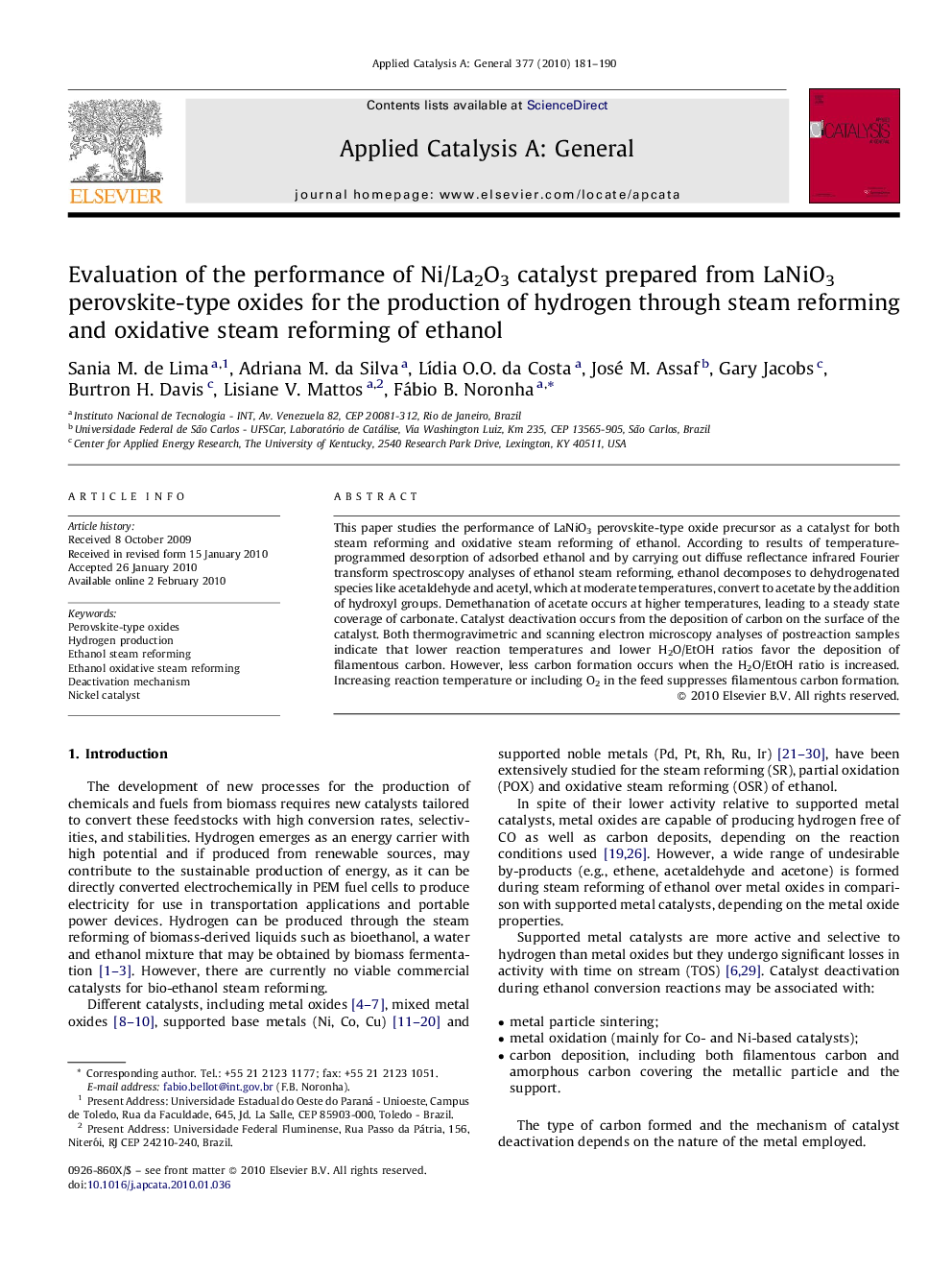| Article ID | Journal | Published Year | Pages | File Type |
|---|---|---|---|---|
| 42357 | Applied Catalysis A: General | 2010 | 10 Pages |
This paper studies the performance of LaNiO3 perovskite-type oxide precursor as a catalyst for both steam reforming and oxidative steam reforming of ethanol. According to results of temperature-programmed desorption of adsorbed ethanol and by carrying out diffuse reflectance infrared Fourier transform spectroscopy analyses of ethanol steam reforming, ethanol decomposes to dehydrogenated species like acetaldehyde and acetyl, which at moderate temperatures, convert to acetate by the addition of hydroxyl groups. Demethanation of acetate occurs at higher temperatures, leading to a steady state coverage of carbonate. Catalyst deactivation occurs from the deposition of carbon on the surface of the catalyst. Both thermogravimetric and scanning electron microscopy analyses of postreaction samples indicate that lower reaction temperatures and lower H2O/EtOH ratios favor the deposition of filamentous carbon. However, less carbon formation occurs when the H2O/EtOH ratio is increased. Increasing reaction temperature or including O2 in the feed suppresses filamentous carbon formation.
Graphical abstractDRIFTS spectra recorded as a function of time on stream under the reaction mixture ethanol + water at 773 K (Figure below) showed that the coverage of carbonate species on the catalyst surface remained constant and could not be responsible for the deactivation observed. Catalyst deactivation was determined to be due to the deposition of carbon.Figure optionsDownload full-size imageDownload high-quality image (122 K)Download as PowerPoint slide
